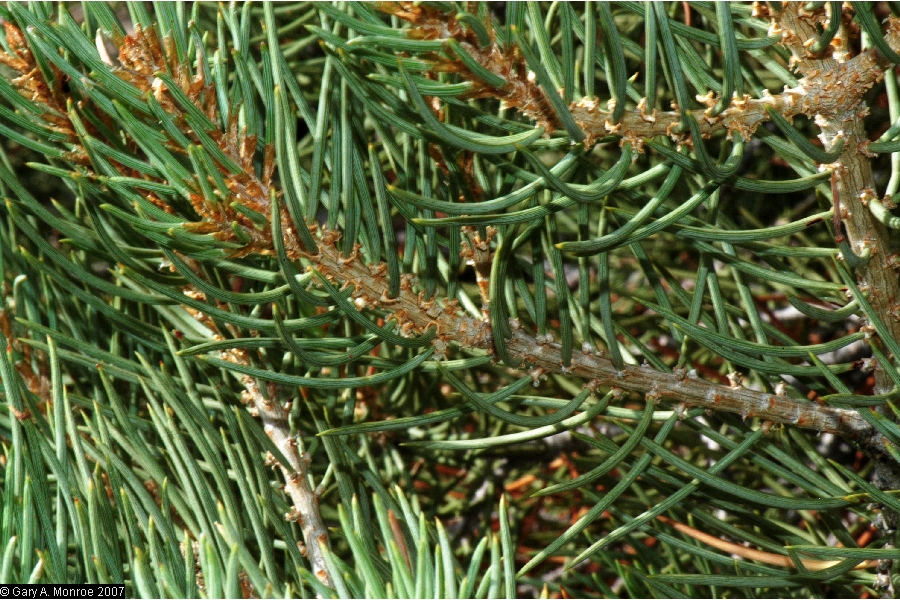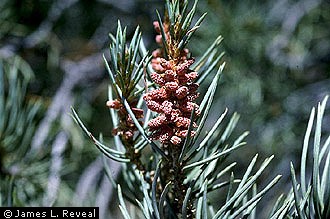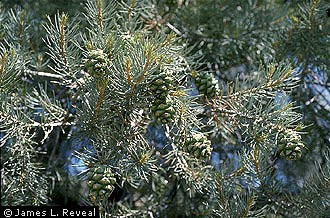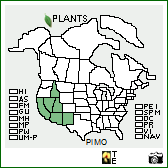Taxonomy: Kingdom - Plantae (plants). Subkingdom - Tracheobionta (vascular plants). Superdivision - Spermatophyta (seed plants). Division - Coniferophyta (conifers). Class - Pinopsida. Order - Pinales. Family - Pinaceae (pine). Genus -Pinus L. Species - Pinus monophylla Torr. & Frém
Ecology: The pinyon-juniper woodland is generally a climax vegetation type throughout its range, reaching climax about 300 years after disturbance, with an ongoing trend toward increased tree density and canopy cover and a decline in understory species over time. Woodlands may also expand into adjacent grass and shrublands over time.Singleleaf pinyon has an extensive lateral root system, giving it the ability to penetrate into open areas between tree canopies and extract water and nutrients. Its ability to invade adjacent shrublands may also be related to the tree's ability to maintain a seasonally stable xylem water potential and thereby to endure drought better than the associated shrub.Pinyons typically grow in association with juniper (Juniperus spp.), with juniper dominating the lower elevations of their range and pinyons the upper. In fully stocked pinyon-juniper stands, understory species comprise a very small portion of the total biomass, though they may be important forage species and the plants most likely to reclaim the site following disturbance. In general, coverage of understory vegetation associated with singleleaf pinyon woodlands varies with geographic area, site quality, and successional stage. Singleleaf pinyon occurs in 3 general regions: the Great Basin, southern California and northern Baja, and parts of Arizona and New Mexico south of the Mogollon Rim.



